19th JULY 1692 FIVE AMERICAN WITCHES HANGED TO DEATH IN SALEM USA
Salem witch trials
From Wikipedia, the free encyclopedia
"Salem Witches" redirects here. For the minor league baseball team, see Salem Witches (NEL).
- For the 1878 lawsuit, see Salem witchcraft trial (1878)
The Salem witch trials were a series of hearings and prosecutions of people accused of witchcraft in colonial Massachusetts between February 1692 and May 1693. The trials resulted in theexecutions of twenty people, most of them women. Despite being generally known as the Salem witch trials, the preliminary hearings in 1692 were conducted in several towns in the Province of Massachusetts Bay: Salem Village (now Danvers), Salem Town, Ipswich and Andover. The most infamous trials were conducted by the Court of Oyer and Terminer in 1692 in Salem Town. One contemporary writer summarized the results of the trials:
Four other accused and an infant child died in prison.
The episode is one of the nation's most notorious cases of mass hysteria, and has been used in political rhetoric and popular literature as a vivid cautionary tale about the dangers of isolationism, religious extremism, false accusations and lapses in due process.[3] It was not unique, but simply an American example of the much broader phenomenon of witch trials in the Early Modern period. Many historians consider the lasting effects of the trials to have been highly influential in subsequent United States history.
Contents
[hide]Background
In 17th-century colonial North America, the supernatural was considered part of everyday life; many people believed that Satan was present and active on Earth. This concept emerged in Europe during the fifteenth century and spread with the later colonization of North America. Peasants used a kind of witchcraft to invoke particular charms for farming and agriculture. Over time, the idea of white magic transformed into dark magic and became associated with demons and evil spirits. From 1560 to 1670, witchcraft persecutions became common as superstitions became associated with the devil.
In Against Modern Sadducism (1668), Joseph Glanvill claimed that he could prove the existence of witches and ghosts of the supernatural realm. Glanvill wrote about the "denial of the bodily resurrection, and the [supernatural] spirits."[5] In his treatise, he claimed that ingenious men should believe in witches and apparitions; if they doubted the reality of spirits, they not only denied demons, but also the almighty God. Glanvill wanted to prove that the supernatural could not be denied; those who did deny apparitions were considered heretics for it also disproved their beliefs in angels.[5] Works by men such as Glanvill and Cotton Mather tried to prove that "demons were alive."[6]
Witchcraft in New England
The executions at Salem were not the first of their kind in the American colonies, nor even in New England. Historian Clarence F. Jewett included a list of other people executed in New England in The Memorial History of Boston: Including Suffolk County, Massachusetts 1630–1880 (Ticknor and Company, 1881). He wrote:
Political context
The original 1629 Royal Charter of the Massachusetts Bay Colony was vacated in 1684,[8] after which King James II installed Sir Edmund Andros as the Governor of the Dominion of New England. Andros was ousted in 1689after the "Glorious Revolution" in England replaced the Catholic James II with the Protestant co-rulers William and Mary.
Simon Bradstreet and Thomas Danforth, the colony's last leaders under the old charter, resumed their posts as governor and deputy governor, but lacked constitutional authority to rule, because the old charter had been vacated. At the same time tensions erupted between English colonists settling in "the Eastward" (the present-day coast of Maine) and French-supported Wabanaki Indians in what came to be known as King William's War. This was 13 years after the devastating King Philip's War with the Wampanoag and other indigenous tribes in southern and western New England. In October 1690, Sir William Phips led an unsuccessful attack on French-held Quebec. Between 1689 and 1692, Native Americans continued to attack many English settlements along the coast, leading to the abandonment of some of the settlements, and resulting in a flood of refugees into areas likeEssex County.
A new charter for the enlarged Province of Massachusetts Bay was given final approval in England on October 16, 1691.[9] News of the appointment of Phips as the new governor reached Boston in late January,[10] and a copy of the new charter arrived in Boston on February 8, 1692.[11] Phips arrived in Boston on May 14[12] and was sworn in as governor two days later along with Lieutenant Governor William Stoughton.[13] One of the first orders of business for the new governor and council on May 27, 1692, was the formal nomination of county justices of the peace, sheriffs, and the commission of a Special Court of Oyer and Terminer to handle the large numbers of people who were "thronging" the jails.[14]
Paul Boyer and Stephen Nissenbaum have postulated that without a valid charter, the colony had no legitimate form of government to try capital cases until Phips arrived with the new charter.[15] This has been disputed by David Konig,[who?] who points out that between charters, according to the Records of the Court of Assistants, the colony tried and condemned a group of 14 pirates on January 27, 1690, for acts of piracy and murder committed in August and October 1689.[16]
Local context
Salem Village (present-day Danvers, Massachusetts) was known for its many internal disputes, and for disputes between the village and Salem Town (present-day Salem). Arguments about property lines, grazing rights, and church privileges were rife, and neighbors considered the population as "quarrelsome." In 1672, the villagers had voted to hire a minister of their own, apart from Salem Town. The first two ministers, James Bayley (1673–79) and George Burroughs (1680–83), stayed only a few years each, departing after the congregation failed to pay their full rate. Despite the ministers' rights being upheld by the General Court and the parish admonished, each of the ministers still chose to leave. The third minister, Deodat Lawson (1684–88), stayed for a short time, leaving after the refusal of the church in Salem to ordain him and not over issues with the congregation. The parish disagreed about the choice of Samuel Parris as Salem Village's first ordained minister. On June 18, 1689, the villagers agreed to hire Parris for ₤66 annually, "one third part in money and the other two third parts in provisions", and use of the parsonage.[17]
On October 10, 1689, however, they voted to grant him the deed to the parsonage and two acres (0.8 hectares) of land.[18] This conflicted with a 1681 resolution which stated that "it shall not be lawful for the inhabitants of this village to convey the houses or lands or any other concerns belonging to the Ministry to any particular persons or person: not for any cause by vote or other ways".[19][improper synthesis?]
Though the prior ministers' fates and the level of contention in Salem Village were valid reasons for caution in accepting the position, Reverend Parris increased the village's divisions by delaying his acceptance. He did not seem to have any gift for settling his new parishioners' disputes: by deliberately seeking out "iniquitous behavior" in his congregation and making church members in good standing suffer public penance for small infractions, he contributed significantly to the tension within the village. Its bickering continued to grow unabated. Historian Marion Starkey suggests that, in this atmosphere, serious conflict may have been inevitable.[20]
Religious context
Prior to the constitutional turmoil of the 1680s, Massachusetts government had been dominated by conservative Puritan secular leaders. Influenced by Calvinism, Puritans had opposed many of the traditions of the Protestant Church of England, including use of the Book of Common Prayer, the use of priestly vestments (cap and gown) during services, the use of the Holy Cross during baptism, and kneeling during the sacrament, all of which they believed constituted popery. King Charles I was hostile to this point of view, and Anglican church officials tried to repress these dissenting views during the 1620s and 1630s. This resulted in some Puritans and other religious minorities seeking refuge in the Netherlands, but ultimately many made a major migration to North America.[21]
These immigrants established several of the earliest colonies in New England, of which the Massachusetts Bay Colony was the largest and most economically important. Self-governance came naturally to them, since building a society based on their religious beliefs was one of their goals. Colonial leaders were elected by the freemen of the colony, those individuals who had had their religious experiences formally examined and had been admitted to one of the colony's Puritan congregations. The colonial leadership were prominent members of their congregations, and regularly consulted with the local ministers on issues facing the colony.[22]
In the early 1640s, England erupted in civil war. The Puritan-dominated Parliamentarians emerged victorious, and the Crown was supplanted by the Protectorate of Oliver Cromwell in 1653. Its failure led to restoration of the old order under Charles II. Emigration to New England slowed significantly in these years. In Massachusetts, a successful merchant class began to develop that was less religiously motivated than the colony's early settlers.[23]
In Salem Village, as in the colony at large, life was governed by the precepts of the Church, which was Calvinist. Instrumental music, dancing, and celebration of holidays such as Christmas and Easter were absolutely forbidden,.[24] The only music allowed was the unaccompanied singing of hymns—as the folk songs of the period were thought to glorify human love and nature, they were rejected as antithetical to God. Toys and especially dolls were forbidden as play was considered a frivolous waste of time.[25]
Children received an education that emphasized religion and the need for strict piety to prevent their eternal damnation.[26] Villagers were expected to go to the meeting house for three-hour sermons every Wednesday and Sunday. Village life revolved around the meeting house, and the few celebrations that were permitted, such as celebration of the harvest, were centered there.[27]
Local rumors of witchcraft
Prior to 1692, there had been rumors of witchcraft in villages neighboring Salem Village and other towns. Cotton Mather, a minister of Boston's North Church (not to be confused with the later Anglican North Church of Paul Revere fame) was a prolific publisher of pamphlets and a firm believer in witchcraft. In his book Memorable Providences Relating to Witchcrafts and Possessions (1689), Mather describes his "oracular observations" and how "stupendous witchcraft"[28] had affected the children of Boston mason John Goodwin. Mather illustrates how the Goodwins' eldest child had been tempted by the devil and stolen linen from the washerwoman Goody Glover.[29] Glover was a disagreeable old woman described by her husband as a witch; this may have been why she was accused of casting spells on the Goodwin children. After the event, four out of six Goodwin children began to have strange fits, or what some people referred to as "the disease of astonishment". The manifestations attributed to the disease quickly became associated with witchcraft. Symptoms included neck and back pains, tongues being drawn from their throats, and loud random outcries; other symptoms included having no control over their bodies such as becoming limber, flapping their arms like birds, or trying to harm others as well as themselves. These symptoms would fuel the craze of 1692.[28]
Timeline
Main article: Timeline of the Salem witch trials
Most accounts begin with the afflictions of the girls in the Parris household in January/February 1692 and end with the last trials in May 1693. Some historians begin with earlier events to place the trials in the wider context of other witch-hunts, and some end later, to include information about restitution to victims and their families.
Initial events
In Salem Village, in February 1692, Betty Parris, age 9, and her cousin Abigail Williams, age 11, the daughter and niece, respectively, of Reverend Samuel Parris, began to have fits described as "beyond the power ofEpileptic Fits or natural disease to effect" by John Hale, the minister of the nearby town of Beverly.[30] The girls screamed, threw things about the room, uttered strange sounds, crawled under furniture, and contortedthemselves into peculiar positions, according to the eyewitness account of Rev. Deodat Lawson, himself a former minister in Salem Village.[31]
The girls complained of being pinched and pricked with pins. A doctor, historically assumed to be William Griggs, could find no physical evidence of any ailment. Other young women in the village began to exhibit similar behaviors. When Lawson preached in the Salem Village meetinghouse, he was interrupted several times by outbursts of the afflicted.[32]
The first three people accused and arrested for allegedly afflicting Betty Parris, Abigail Williams, 12-year-old Ann Putnam, Jr., and Elizabeth Hubbard were Sarah Good, Sarah Osborne, and Tituba. The accusation by Ann Putnam Jr. is seen by some historians as evidence that a family feud may have been a major cause of the witch trials. At the time, a vicious rivalry was underway between the Putnam and Porter families, one which deeply polarized the people of Salem. Citizens would often have heated debates, which escalated into full-fledged fighting, based solely on their opinion of the feud.[33]
Good was a homeless beggar, known to seek food and shelter from neighbors. She was accused of witchcraft because of her appalling reputation. At her trial, she was accused of rejecting Puritan ideals of self-control and discipline when she chose to torment and “scorn [children] instead of leading them towards the path of salvation".[34]
Sarah Osborne rarely attended church meetings. She was accused of witchcraft because the Puritans believed that Osborne had her own self-interests in mind following her remarriage to an indentured servant. The citizens of the town disapproved of her trying to control her son's inheritance from her previous marriage.
Tituba, a black or Indian slave, likely became a target because of her ethnic differences from most of the other villagers. She was accused of attracting girls like Abigail Williams and Betty Parris with stories of enchantment from Malleus Maleficarum. These tales about sexual encounters with demons, swaying the minds of men, and fortune-telling were said to stimulate the imaginations of girls and made Tituba an obvious target of accusations.[35] Each of these women were outcasts of a sort, satisfying many of the character traits typical of the "usual suspects" for witchcraft accusations, and left to defend themselves. Brought before the local magistrates on the complaint of witchcraft, they were interrogated for several days, starting on March 1, 1692, then sent to jail.[36]
In March, additional women were accused of witchcraft: Martha Corey, Dorothy Good and Rebecca Nurse in Salem Village, and Rachel Clinton in nearby Ipswich. Martha Corey had voiced skepticism about the credibility of the girls' accusations, and thus drawn attention. The charges against her and Rebecca Nurse deeply troubled the community because Martha Corey was a full covenanted member of the Church in Salem Village, as was Rebecca Nurse in the Church in Salem Town. If such upstanding people could be witches, the townspeople conceived, then anybody could be a witch, and church membership was no protection from accusation. Dorothy Good, the daughter of Sarah Good, was only 4 years old, but not exempted from questioning by the magistrates; her answers were construed as a confession that implicated her mother. In Ipswich, Rachel Clinton was arrested for witchcraft at the end of March on charges unrelated to the afflictions of the girls in Salem Village.[37]
Accusations and examinations before local magistrates
When Sarah Cloyce (Nurse's sister) and Elizabeth (Bassett) Proctor were arrested in April, they were brought before John Hathorne and Jonathan Corwin, not only in their capacity as local magistrates, but as members of the Governor's Council, at a meeting in Salem Town. Present for the examination were Deputy Governor Thomas Danforth, and Assistants Samuel Sewall, Samuel Appleton, James Russell and Isaac Addington. Objections by Elizabeth's husband, John Proctor, during the proceedings resulted in his arrest that day as well.
Within a week, Giles Corey (Martha's husband, and a covenanted church member in Salem Town), Abigail Hobbs, Bridget Bishop, Mary Warren (a servant in the Proctor household and sometime accuser) and Deliverance Hobbs (stepmother of Abigail Hobbs) were arrested and examined. Abigail Hobbs, Mary Warren and Deliverance Hobbs all confessed and began naming additional people as accomplices. More arrests followed: Sarah Wildes, William Hobbs (husband of Deliverance and father of Abigail), Nehemiah Abbott Jr., Mary Eastey (sister of Cloyce and Nurse), Edward Bishop, Jr. and his wife Sarah Bishop, and Mary English.
On April 30, Rev. George Burroughs, Lydia Dustin, Susannah Martin, Dorcas Hoar, Sarah Morey and Philip English (Mary's husband) were arrested. Nehemiah Abbott Jr. was released because the accusers agreed he was not the person whose specter had afflicted them. Mary Eastey was released for a few days after her initial arrest because the accusers failed to confirm that it was she who had afflicted them; she was arrested again when the accusers reconsidered. In May, accusations continued to pour in, but some of those suspects began to evade apprehension. Multiple warrants were issued before John Willard and Elizabeth Colson were apprehended; George Jacobs Jr. and Daniel Andrews were not caught. Until this point, all the proceedings were investigative, but on May 27, 1692, William Phips ordered the establishment of a Special Court of Oyer and Terminer for Suffolk, Essex and Middlesex counties to prosecute the cases of those in jail. Warrants were issued for more people. Sarah Osborne, one of the first three accused, died in jail on May 10, 1692.
Warrants were issued for 36 more people, with examinations continuing to take place in Salem Village: Sarah Dustin (daughter of Lydia Dustin), Ann Sears, Bethiah Carter Sr. and her daughter Bethiah Carter Jr., George Jacobs, Sr. and his granddaughter Margaret Jacobs, John Willard, Alice Parker, Ann Pudeator, Abigail Soames, George Jacobs, Jr. (son of George Jacobs, Sr. and father of Margaret Jacobs), Daniel Andrew, Rebecca Jacobs (wife of George Jacobs, Jr. and sister of Daniel Andrew), Sarah Buckley and her daughter Mary Witheridge.[38]
Also included were Elizabeth Colson, Elizabeth Hart, Thomas Farrar, Sr., Roger Toothaker, Sarah Proctor (daughter of John and Elizabeth Proctor), Sarah Bassett (sister-in-law of Elizabeth Proctor), Susannah Roots, Mary DeRich (another sister-in-law of Elizabeth Proctor), Sarah Pease, Elizabeth Cary, Martha Carrier, Elizabeth Fosdick, Wilmot Redd, Sarah Rice, Elizabeth Howe, Capt. John Alden (son of John Alden and Priscilla Mullins), William Proctor (son of John and Elizabeth Proctor), John Flood, Mary Toothaker (wife of Roger Toothaker and sister of Martha Carrier) and her daughter Margaret Toothaker, and Arthur Abbott. When the Court of Oyer and Terminer convened at the end of May, the total number of people in custody was 62.[39]
Cotton Mather wrote to one of the judges, John Richards, a member of his congregation, on May 31, 1692,[40] expressing his support of the prosecutions, but cautioning him, "do not lay more stress on pure spectral evidence than it will bear... It is very certain that the Devils have sometimes represented the Shapes of persons not only innocent, but also very virtuous. Though I believe that the just God then ordinarily provides a way for the speedy vindication of the persons thus abused."[41]
Formal prosecution: The Court of Oyer and Terminer
The Court of Oyer and Terminer convened in Salem Town on June 2, 1692, with William Stoughton, the new Lieutenant Governor, as Chief Magistrate, Thomas Newton as the Crown's Attorney prosecuting the cases, and Stephen Sewall as clerk. Bridget Bishop's case was the first brought to the grand jury, who endorsed all the indictments against her. Bishop was described as not living a Puritan lifestyle, for she wore black clothing and odd costumes, which was against the Puritan code. When she was examined before her trial, Bishop was asked about her coat, which had been awkwardly “cut or torn in two ways”.[42] This, along with her "immoral" lifestyle, accused her of a being a witch. She went to trial the same day and was convicted. On June 3, the grand jury endorsed indictments against Rebecca Nurse and John Willard, but it is unclear why they did not go to trial immediately as well. Bishop was executed by hanging on June 10, 1692.
Immediately following this execution, the court adjourned for 20 days (until June 30) while it sought advice from New England's most influential ministers "upon the state of things as they then stood." [43][44] Their collective response came back dated June 15 and composed by Cotton Mather:
Hutchinson sums the letter, "The two first and the last sections of this advice took away the force of all the others, and the prosecutions went on with more vigor than before." (Reprinting the letter years later in Magnalia, Cotton Mather left out these "two first and the last" sections.) Major Nathaniel Saltonstall Esq. resigned from the court on or about June 16, presumably dissatisfied with the letter and that it had not outright barred the admission of spectral evidence. According to Upham, Saltonstall deserves the credit for "being the only public man of his day who had the sense or courage to condemn the proceedings, at the start." (chapt. VII) More people were accused, arrested and examined, but now in Salem Town, by former local magistrates John Hathorne, Jonathan Corwin and Bartholomew Gedney, who had become judges of the Court of Oyer and Terminer. Roger Toothaker died in prison on June 16, 1692.
From June 30 through early July, grand juries endorsed indictments against Sarah Good, Elizabeth Howe, Susannah Martin, Elizabeth Proctor, John Proctor, Martha Carrier, Sarah Wilds and Dorcas Hoar. Sarah Good, Elizabeth Howe, Susannah Martin and Sarah Wildes, along with Rebecca Nurse, went to trial at this time, where they were found guilty. All five women were executed by hanging on July 19, 1692. In mid-July, the constable in Andover invited the afflicted girls from Salem Village to visit with his wife to try to determine who was causing her afflictions. Ann Foster, her daughter Mary Lacey Sr., and granddaughter Mary Lacey Jr. all confessed to being witches. Anthony Checkley was appointed by Governor Phips to replace Thomas Newton as the Crown's Attorney when Newton took an appointment in New Hampshire.
In August, grand juries indicted George Burroughs, Mary Eastey, Martha Corey and George Jacobs, Sr.. Trial juries convicted Martha Carrier, George Jacobs, Sr., George Burroughs, John Willard, Elizabeth Proctor, and John Proctor. Elizabeth Proctor was given a temporary stay of execution because she was pregnant. On August 19, 1692, Martha Carrier, George Jacobs Sr., George Burroughs, John Willard, and John Proctor were executed.
September 1692
In September, grand juries indicted eighteen more people. The grand jury failed to indict William Proctor, who was re-arrested on new charges. On September 19, 1692, Giles Corey refused to plead at arraignment, and was subjected to peine forte et dure, a form of torture in which the subject is pressed beneath an increasingly heavy load of stones, in an attempt to make him enter a plea. Four pleaded guilty and eleven others were tried and found guilty.
September 20, Cotton Mather wrote to Stephen Sewall, the clerk of the court: "That I may be the more capable to assist in lifting up a standard against the infernal enemy...", requesting "... a narrative of the evidence given in at the trials of half a dozen, or if you please, a dozen, of the principal witches that have been condemned." On September 22, 1692, eight more were executed, "After Execution Mr. Noyes turning him to the Bodies, said, what a sad thing it is to see Eight Firebrands of Hell hanging there."[45] One of the convicted, Dorcas Hoar, was given a temporary reprieve, with the support of several ministers, to make a confession of being a witch. Mary Bradbury (aged 77) escaped. Abigail Faulkner Sr. was pregnant and given a temporary reprieve (some reports from that era say that Abigail's reprieve later became a stay of charges). Mather quickly completed his account of the trials, Wonders of the Invisible World[46] and it was given to Phips when he returned from the fighting in Maine in early October. Burr says both the Phip's letter and Mather's manuscript "must have gone to London by the same ship" in mid-October.[47]
October 29, Judge Sewall writes "the Court of Oyer and Terminer count themselves thereby dismissed... asked whether the Court of Oyer and Terminer should sit, expressing some fear of Inconvenience by its fall, [the] Governour said it must fall." (Sewall's Diary, I. 368.) Governor Phips' wife, Lady Mary Phips, was among those "called out upon" by the afflicted. Spectral evidence was once again in question. There would be more trials after the new year, but not like before.
Superior Court of Judicature, 1693
In January 1693, the new Superior Court of Judicature, Court of Assize and General Gaol Delivery convened in Salem, Essex County, again headed by William Stoughton, as Chief Justice, with Anthony Checkley continuing as the Attorney General, and Jonathan Elatson as Clerk of the Court. The first five cases tried in January 1693 were of the five people who had been indicted but not tried in September: Sarah Buckley, Margaret Jacobs, Rebecca Jacobs, Mary Whittredge and Job Tookey. All were found not guilty. Grand juries were held for many of those remaining in jail. Charges were dismissed against many, but sixteen more people were indicted and tried, three of whom were found guilty: Elizabeth Johnson Jr., Sarah Wardwell and Mary Post. When Stoughton wrote the warrants for the execution of these women and the others remaining from the previous court, Governor Phips pardoned them, sparing their lives. In late January/early February, the Court sat again in Charlestown, Middlesex County, and held grand juries and tried five people: Sarah Cole (of Lynn), Lydia Dustin & Sarah Dustin, Mary Taylor and Mary Toothaker. All were found not guilty, but not released until they paid their jail fees. Lydia Dustin died in jail on March 10, 1693. At the end of April, the Court convened in Boston, Suffolk County, and clearedCapt. John Alden by proclamation, and heard charges against a servant girl, Mary Watkins, for falsely accusing her mistress of witchcraft. In May, the Court convened in Ipswich, Essex County, held a variety of grand juries who dismissed charges against all but five people. Susannah Post, Eunice Frye, Mary Bridges Jr., Mary Barker and William Barker Jr. were all found not guilty at trial, putting an end to the episode.[citation needed]
Legal procedures
Overview
After someone concluded that a loss, illness or death had been caused by witchcraft, the accuser entered a complaint against the alleged witch with the local magistrates.[48] If the complaint was deemed credible, the magistrates had the person arrested[49] and brought in for a public examination, essentially an interrogation, where the magistrates pressed the accused to confess.[50]
If the magistrates at this local level were satisfied that the complaint was well-founded, the prisoner was handed over to be dealt with by a superior court. In 1692, the magistrates opted to wait for the arrival of the new charter and governor, who would establish a Court of Oyer and Terminer to handle these cases. The next step, at the superior court level, was to summon witnesses before a grand jury.[51]
A person could be indicted on charges of afflicting with witchcraft,[52] or for making an unlawful covenant with the Devil.[53] Once indicted, the defendant went to trial, sometimes on the same day, as in the case of the first person indicted and tried on June 2, Bridget Bishop, who was executed on June 10, 1692. There were four execution dates, with one person executed on June 10, 1692,[54] five executed on July 19, 1692 (Sarah Good,Rebecca Nurse, Susannah Martin, Elizabeth Howe & Sarah Wildes),[55] another five executed on August 19, 1692 (Martha Carrier, John Willard, George Burroughs, George Jacobs, Sr. and John Proctor), and eight on September 22, 1692 (Mary Eastey, Martha Corey, Ann Pudeator, Samuel Wardwell, Mary Parker, Alice Parker, Wilmot Redd and Margaret Scott).
Several others, including Elizabeth (Bassett) Proctor and Abigail Faulkner, were convicted but given temporary reprieves because they were pregnant. Five other women were convicted in 1692, but the sentence was never carried out: Ann Foster (who later died in prison), her daughter Mary Lacy Sr., Abigail Hobbs, Dorcas Hoar and Mary Bradbury.
Giles Corey, a 71-year-old farmer from the southeast end of Salem (called Salem Farms), refused to enter a plea when he came to trial in September. The judges applied an archaic form of punishment called peine forte et dure, in which stones were piled on his chest until he could no longer breathe. After two days of peine fort et dure, Corey died without entering a plea.[56] His refusal to plead is usually explained as a way of preventing his estate from being confiscated by the Crown, but, according to historian Chadwick Hansen, much of Corey's property had already been seized, and he had made a will in prison: "His death was a protest ... against the methods of the court".[57] This echoes the perspective of a contemporary critic of the trials, Robert Calef, who claimed, "Giles Corey pleaded not Guilty to his Indictment, but would not put himself upon Tryal by the Jury (they having cleared none upon Tryal) and knowing there would be the same Witnesses against him, rather chose to undergo what Death they would put him to."[58]
Not even in death were the accused witches granted peace or respect. As convicted witches, Rebecca Nurse and Martha Corey had been excommunicated from their churches and denied proper burials. As soon as the bodies of the accused were cut down from the trees, they were thrown into a shallow grave and the crowd dispersed. Oral history claims that the families of the dead reclaimed their bodies after dark and buried them in unmarked graves on family property. The record books of the time do not mention the deaths of any of those executed.[citation needed]
Spectral evidence
Main article: Spectral evidence
Much, but not all, of the evidence used against the accused was spectral evidence, or the testimony of the afflicted who claimed to see the apparition or the shape of the person who was allegedly afflicting them. The theological dispute that ensued about the use of this evidence centered on whether a person had to give permission to the Devil for his/her shape to be used to afflict. Opponents claimed that the Devil was able to use anyone's shape to afflict people, but the Court contended that the Devil could not use a person's shape without that person's permission; therefore, when the afflicted claimed to see the apparition of a specific person, that was accepted as evidence that the accused had been complicit with the Devil. Increase Mather and other ministers sent a letter to the Court, "The Return of Several Ministers Consulted", urging the magistrates not to convict on spectral evidence alone. (Spectral evidence was later ruled inadmissible, which caused a dramatic reduction in the rate of convictions and may have hastened the end of the trials.) A copy of this letter was printed in Increase Mather's Cases of Conscience, published in 1693. The publication A Tryal of Witches, was used by the magistrates at Salem, when looking for a precedent in allowing spectral evidence. Finding that no lesser person than the jurist Sir Matthew Hale had permitted this evidence, supported by the eminent philosopher, physician and author Thomas Browne, to be used in the Bury St Edmunds witch trial and the accusations against two Lowestoftwomen, held in 1662 in Bury St Edmunds, Suffolk, England, they also accepted its validity and the trials proceeded.[59]
Witch cake
At some point in February 1692, likely after the afflictions began but before specific names were mentioned, a neighbor of Rev. Parris, Mary Sibly (or Sibley; aunt of the afflicted Mary Walcott), instructed John Indian, one of the minister's slaves, to make a witch cake, using traditional English white magic to discover the identity of the witch who was afflicting the girls. The cake, made from rye meal and urine from the afflicted girls, was fed to a dog. According to English folk understanding of how witches accomplished affliction, when the dog ate the cake, the witch herself would be hurt because invisible particles she had sent to afflict the girls remained in the girls' urine, and her cries of pain when the dog ate the cake would identify her as the witch. This superstition was based on the Cartesian "Doctrine of Effluvia", which posited that witches afflicted by the use of "venomous and malignant particles, that were ejected from the eye", according to the October 8, 1692 letter of Thomas Brattle, a contemporary critic of the trials.[60]
According to the Records of the Salem-Village Church, Parris spoke with Sibly (or Sibley) privately on March 25, 1692 about her "grand error" and accepted her "sorrowful confession." During his Sunday sermon on March 27 he addressed his congregation on the subject of the "calamities" that had begun in his own household, but stated "it never brake forth to any considerable light, until diabolical means were used, by the making of a cake by my Indian man, who had his direction from this our sister, Mary Sibly", going on to admonish all against the use of any kind of magic, even white magic, because it was essentially, "going to the Devil for help against the Devil." Mary Sibly (or Sibley) publicly acknowledged the error of her actions before the congregation, who voted by a show of hands that they were satisfied with her admission of error.[61] Other instances appear in the records of the episode that demonstrated a continued belief by members of the community in this effluvia as legitimate evidence, including accounts in two statements against Elizabeth Howe that people had suggested cutting off and burning an ear of two different animals Howe was thought to have afflicted, to prove she was the one who had bewitched them to death.[62]
Traditionally, the allegedly afflicted girls are said to have been entertained by Parris' slave, Tituba, who supposedly taught them about voodoo in the parsonage kitchen in early 1692, although there is no contemporary evidence to support the story.[63] A variety of secondary sources, starting with Charles W. Upham in the 19th century, typically relate that a circle of the girls, with Tituba's help, tried their hands at fortune telling using the white of an egg and a mirror to create a primitive crystal ball to divine the professions of their future spouses and scared one another when one supposedly saw the shape of a coffin instead. The story is drawn from John Hale's book about the trials,[64] but in his account, only one of the girls, not a group of them, had confessed to him afterwards that she had once tried this. Hale did not mention Tituba as having any part of it, nor when it had occurred. Yet the record of her pre-trial examination holds her giving an energetic confession, speaking before the court of "creatures who inhabit the invisible world," and "the dark rituals which bind them together in service of Satan", implicating both Good and Osborne while asserting that "many other people in the colony were engaged in the devil's conspiracy against the Bay."[65]
Tituba's race is often cited as Carib-Indian or of African descent, but contemporary sources describe her only as an "Indian". Research by Elaine Breslaw has suggested that she may well have been captured in what is now Venezuela and brought to Barbados, and so may have been an Arawak Indian.[66] Other slightly later descriptions of her, by Gov. Thomas Hutchinson writing his history of the Massachusetts Bay Colony in the 18th century, describe her as a "Spanish Indian."[67] In that day, that typically meant a Native American from the Carolinas/Georgia/Florida.
Touch test
The most infamous employment of the belief in effluvia – and in direct opposition to what Parris had advised his own parishioners in Salem Village – was the touch test used in Andover during preliminary examinations in September 1692. If the accused witch touched the victim while the victim was having a fit, and the fit then stopped, that meant the accused was the person who had afflicted the victim. As several of those accused later recounted, "we were blindfolded, and our hands were laid upon the afflicted persons, they being in their fits and falling into their fits at our coming into their presence, as they said. Some led us and laid our hands upon them, and then they said they were well and that we were guilty of afflicting them; whereupon we were all seized, as prisoners, by a warrant from the justice of the peace and forthwith carried to Salem"[68] Rev. John Hale explained how this supposedly worked: "the Witch by the cast of her eye sends forth a Malefick Venome into the Bewitched to cast him into a fit, and therefore the touch of the hand doth by sympathy cause that venome to return into the Body of the Witch again".[69]
Other evidence
Other evidence included the confessions of the accused; testimony by a confessed witch who identified others as witches; the discovery of poppits (poppets), books of palmistry and horoscopes, or pots of ointments in the possession or home of the accused; and observation of what were called witch's teats on the body of the accused. A witch's teat was said to be a mole or blemish somewhere on the body that was insensitive to touch; discovery of such insensitive areas was considered de facto evidence of witchcraft.[citation needed]
Contemporary commentary on the trials
Various accounts and opinions about the proceedings began to be published in 1692. Deodat Lawson, a former minister in Salem Village, visited Salem Village in March and April 1692. Later that year, he published in Boston an account of what he saw and heard, entitled, A Brief and True Narrative of Some Remarkable Passages Relating to Sundry Persons Afflicted by Witchcraft, at Salem Village: Which happened from the Nineteenth of March, to the Fifth of April, 1692.[70]
Rev. William Milbourne, a Baptist minister in Boston, publicly petitioned the General Assembly in early June 1692, challenging the use of spectral evidence by the Court. Milbourne had to post £200 bond (equal to £27,963, or about $42,000 USD today) or be arrested for "contriving, writing and publishing the said scandalous Papers".[71]
On June 15, 1692, twelve local ministers — including Increase Mather and Samuel Willard — submitted The Return of several Ministers to the Governor and Council in Boston, cautioning the authorities not to rely entirely on the use of spectral evidence, stating,
Sometime in 1692, minister of the Third Church in Boston,[73] Samuel Willard anonymously published a short tract in Philadelphia entitled, "Some Miscellany Observations On our present Debates respecting Witchcrafts, in a Dialogue Between S. & B." The authors were listed as "P.E. and J. A." (Philip English and John Alden), but the work is generally attributed to Willard. In it, two characters, S (Salem) and B (Boston), discuss the way the proceedings were being conducted, with "B" urging caution about the use of testimony from the afflicted and the confessors, stating, "whatever comes from them is to be suspected; and it is dangerous using or crediting them too far".[74]
Sometime in September 1692, at the request of Governor Phips, Cotton Mather wrote "Wonders of the Invisible World: Being an Account of the Tryals of Several Witches, Lately Executed in New-England," as a defense of the trials, to "help very much flatten that fury which we now so much turn upon one another".[75] It was published in Boston and London in 1692, although dated 1693, with an introductory letter of endorsement by William Stoughton, the Chief Magistrate. The book included accounts of five trials, with much of the material copied directly from the court records, which were supplied to Mather by Stephen Sewall, his friend and Clerk of the Court.[76]
Cotton Mather's father, Increase Mather, published Cases of Conscience Concerning Evil Spirits, dated October 3, 1692, after the last trials by the Court of Oyer and Terminer. (The title page mistakenly lists the publication year as "1693".) In it, Mather repeated his caution about the reliance on spectral evidence, stating "It were better that Ten Suspected Witches should escape, than that one Innocent Person should be Condemned".[77] Second and third editions of this book were published in Boston and London in 1693, the third of which also included Lawson's Narrative and the anonymous "A Further Account of the Tryals of the New-England Witches, sent in a Letter from thence, to a Gentleman in London."[78]
Aftermath and closure
Although the last trial was held in May 1693, public response to the events continued. In the decades following the trials, the issues primarily had to do with establishing the innocence of the individuals who were convicted and compensating the survivors and families. In the following centuries, the descendants of those unjustly accused and condemned have sought to honor their memories. The trials have figured in American culture and been explored in numerous works of art and literature.
Reversals of attainder and compensation to the survivors and their families
The first indication that public calls for justice were not over occurred in 1695 when Thomas Maule, a noted Quaker, publicly criticized the handling of the trials by the Puritan leaders in Chapter 29 of his book Truth Held Forth and Maintained, expanding on Increase Mather by stating, "it were better that one hundred Witches should live, than that one person be put to death for a witch, which is not a Witch".[79] For publishing this book, Maule was imprisoned twelve months before he was tried and found not guilty.[80]
On December 17, 1696, the General Court ruled that there would be a fast day on January 14, 1697, "referring to the late Tragedy, raised among us by Satan and his Instruments."[81]On that day, Samuel Sewall asked Rev. Samuel Willard to read aloud his apology to the congregation of Boston's South Church, "to take the Blame & Shame" of the "late Commission of Oyer & Terminer at Salem".[82] Thomas Fiske and eleven other trial jurors also asked forgiveness.[83]
From 1693-97, Robert Calef, a "weaver" and a cloth merchant in Boston, collected correspondence, court records and petitions, and other accounts of the trials, and placed them, for contrast, alongside portions of Cotton Mather's Wonders of the Invisible World, under the title More Wonders of the Invisible World,[1] Calef could not get it published in Boston and he had to take it to London, where it was published in 1700. Scholars of the trials-- Hutchinson, Upham, Burr, and even Poole-- have relied on Calef's compilation of documents. John Hale, a minister in Beverly who was present at many of the proceedings, had completed his book, A Modest Enquiry into the Nature of Witchcraft in 1697, which was not published until 1702, after his death, and perhaps in response to Calef's book. Expressing regret over the actions taken, Hale admitted, "Such was the darkness of that day, the tortures and lamentations of the afflicted, and the power of former presidents, that we walked in the clouds, and could not see our way."[84]
Various petitions were filed between 1700 and 1703 with the Massachusetts government, demanding that the convictions be formally reversed. Those tried and found guilty were considered dead in the eyes of the law, and with convictions still on the books, those not executed were vulnerable to further accusations. The General Court initially reversed the attainder only for those who had filed petitions,[85] only three people who had been convicted but not executed: Abigail Faulkner Sr., Elizabeth Proctor and Sarah Wardwell.[86] In 1703, another petition was filed,[87] requesting a more equitable settlement for those wrongly accused, but it wasn't until 1709, when the General Court received a further request, that it took action on this proposal. In May 1709, 22 people who had been convicted of witchcraft, or whose relatives had been convicted of witchcraft, presented the government with a petition in which they demanded both a reversal of attainder and compensation for financial losses.[88]
Repentance was evident within the Salem Village church. Rev. Joseph Green and the members of the church voted on February 14, 1703, after nearly two months of consideration, to reverse the excommunication of Martha Corey.[89] On August 25, 1706, when Ann Putnam Jr., one of the most active accusers, joined the Salem Village church, she publicly asked forgiveness. She claimed that she had not acted out of malice, but was being deluded by Satan into denouncing innocent people, and mentioned Rebecca Nurse in particular,[90] and was accepted for full membership.
On October 17, 1711, the General Court passed a bill reversing the judgment against the 22 people listed in the 1709 petition (there were seven additional people who had been convicted but had not signed the petition, but there was no reversal of attainder for them). Two months later, on December 17, 1711, Governor Joseph Dudley authorized monetary compensation to the 22 people in the 1709 petition. The amount of 578 pounds 12 shillings was authorized to be divided among the survivors and relatives of those accused, and most of the accounts were settled within a year,[91] but Phillip English's extensive claims weren't settled until 1718.[92] Finally, on March 6, 1712, Rev. Nicholas Noyes, and members of the Salem church reversed Noyes' earlier excommunications of Rebecca Nurse and Giles Corey.[93]
Memorials by descendants
Rebecca Nurse's descendants erected an obelisk-shaped granite memorial in her memory in 1885 on the grounds of the Nurse Homestead in Danvers, with an inscription from John Greenleaf Whittier. In 1892 an additional monument was erected in honor of 40 neighbors who signed a petition in support of Nurse.[94]
Not all the condemned had been exonerated in the early 18th century, and so in 1957, descendants of the six people who had been wrongly convicted and executed but who had not been included in the bill for a reversal of attainder in 1711, or added to it in 1712, demanded that the General Court formally clear the names of their ancestral family members. An act was passed pronouncing the innocence of those accused, although it listed only Ann Pudeator by name. The others were listed only as "certain other persons", phrasing which failed specifically to name Bridget Bishop, Susannah Martin, Alice Parker, Wilmot Redd and Margaret Scott.[95]
The 300th anniversary of the trials was marked in Salem and Danvers by a variety of events in 1992. A memorial park was dedicated in Salem with a stone bench for each of those executed in 1692. Speakers at the ceremony in August included Arthur Miller and Nobel Laureate Elie Wiesel.[96] Danvers erected its own new memorial,[97] and reinterred bones unearthed in the 1950s, assumed to be those of George Jacobs, Sr., in a new resting place at the Rebecca Nurse Homestead.[94]
In 1992, The Danvers Tercentennial Committee also persuaded the Massachusetts House of Representatives to issue a resolution honoring those who had died. After much convincing and hard work by Salem school teacher Paula Keene, Representatives J. Michael Ruane and Paul Tirone and others, the names of all those not previously listed were added to this resolution. When it was finally signed on October 31, 2001, by GovernorJane Swift, more than 300 years later, all were finally proclaimed innocent.[98]
In literature, media and popular culture
Main article: Cultural depictions of the Salem witch trials
The story of the witchcraft accusations, trials and executions has captured the imagination of writers and artists in the centuries since the event took place, many of which interpretations have taken liberties with the facts of the historical episode in the name of literary and/or artistic license. Occurring at the intersection between a gradually disappearing medieval past and an emerging enlightenment and dealing with torture and confession, such interpretations draw attention to the boundaries between the medieval and the postmedieval as cultural constructions.[99]
Medical theories about the reported afflictions
Main article: Medical and psychological explanations of bewitchment
The cause of the symptoms of those who claimed affliction continues to be a subject of interest. Various medical and psychological explanations for the observed symptoms have been explored by researchers, including psychological hysteria in response to Indian attacks, convulsive ergotism caused by eating rye bread made from grain infected by the fungus Claviceps purpurea (a natural substance from which LSD is derived),[100] an epidemic of bird-borne encephalitis lethargica, and sleep paralysis to explain the nocturnal attacks alleged by some of the accusers.[101] There are modern historians who are less inclined to focus on biological explanations, preferring instead to explore motivations such as jealousy, spite, and a need for attention to explain the behavior.[102]
See also
- Colonial history of the United States
- Ipswich witchcraft trial of 1878, also known as the "second Salem witch trial"
- List of people executed for witchcraft
- List of people of the Salem witch trials
- Witch trials in the Early Modern period
- Capital punishment
- Witchcraft and children
- List of wrongful convictions in the United States
References
List of people executed for witchcraft
From Wikipedia, the free encyclopedia
"List of witches" redirects here. For witches in fiction, see List of fictional witches.
| The examples and perspective in this article may not represent a worldwide view of the subject. (September 2014) |
This is a list of people executed for witchcraft, many of whom were executed during organised witch-hunts, particularly from the 15th–18th centuries. Large numbers of people were prosecuted for witchcraft in Europe between 1560 and 1630.[1] Until around 1420, witchcraft-related prosecutions in Europe centred on maleficium, the concept of using supernatural powers specifically to harm others. Cases came about from accusations of the use of ritual magic to damage rivals.[1] Up until the early 15th century, there was little association of witchcraft with Satan.[2] From that time organised witch-hunts increased, as did individual accusations of sorcery. The nature of the charges brought changed as more cases were linked to diabolism. Throughout the century, a number of treatises were published that helped to establish a stereotype of the witch, particularly the Satanic connection. During the 16th century, witchcraft prosecutions stabilised and even declined in some areas.[2] Witch-hunts increased again in the 17th century. The witch trials in Early Modern Europe included the Basque witch trials in Spain, the Fulda witch trials in Germany, the North Berwick witch trials in Scotland and the Torsåker witch trials in Sweden.
Witch-hunts also took place during the 17th century in the American colonies. These were particularly common in the colonies of Massachusetts, Connecticut and New Haven. The myth of the witch had a strong cultural presence in 17th century New England and, as in Europe, witchcraft was strongly associated with devil-worship.[3] About eighty people were accused of practising witchcraft in a witch-hunt that lasted throughout New England from 1648-1663. Thirteen women and two men were executed.[4] The Salem witch trials followed in 1692–93, culminating in the executions of 20 people. 5 others died in jail.
It has been estimated that tens of thousands of people were executed for witchcraft in Europe and the American colonies over several hundred years. Although it is not possible to ascertain the exact number, modern scholars estimate around 40–50,000.[A] Common methods of execution for convicted witches were hanging, drowning and burning. Burning was often favoured, particularly in Europe, as it was considered a more painful way to die.[5]Prosecutors in the American colonies generally preferred hanging in cases of witchcraft.[5]
List and images of those executed for witchcraft[edit]
| Name | Lifetime | Nationality | Notes |
|---|---|---|---|
| Johann Albrecht Adelgrief | d. 1636 | German | Executed after claiming to be a prophet.[7] |
| Marigje Arriens | ca. 1520–1591 | Dutch | Burned to death for sorcery |
| Angéle de la Barthe | ca. 1230–1275 | French | Found guilty of sexual relations with the devil and burned to death.[8] |
| Goodwife Bassett[9] | d. 1651 | Colonial American colonist | Hanged at Fairfield, Connecticut |
| Agnes Bernauer | ca. 1410–1435 | German | Convicted of witchcraft and thrown in the Danube to drown, following accusations by her father-in-law Ernest, Duke of Bavaria. |
| Merga Bien | 1560s–1603 | German | Convicted as part of the Fulda witch trials and burned to death. |
| Lasses Birgitta | d. 1550 | Swedish | The first woman executed for witchcraft in Sweden; beheaded. |
| Bridget Bishop | ca. 1632–1692 | English (emigrated to British America) | The first person to be tried and executed during the Salem witch trials.[10] |
| Giovanna Bonanno | d. 1789 | Italian | A widow and beggar accused of selling potions and spells intended to kill people to her neighbours. Accused of sorcery and hanged.[11] |
| Sidonia von Borcke | 1548–1620 | Pomeranian | Confessed to murder and witchcraft under torture; beheaded, corpse burned. |
| George Burroughs | ca. 1650–1692 | Colonial American colonist | Congregational pastor, executed as part of the Salem witch trials.[12] |
| Martha Carrier | d. 19 Aug 1692 | Colonial American colonist | Hanged during the Salem witch trials; her children had claimed she was a witch. |
| Anne de Chantraine | 1605–1622 | French | Burned to death. |
| Michée Chauderon | d. 1652 | Swiss | Confessed under torture to summoning demons and was the last person executed for sorcery in Geneva.[13] |
| Nyzette Cheveron | d. 1605 | Belgian | Confessed to being a witch; was strangled and burned to death. |
| Elizabeth Clarke | ca. 1565–1645 | English | The first woman persecuted by the Witchfinder General, Matthew Hopkins; hanged. |
| Bridget Cleary | ca. 1870-1895 | County Tipperary, Ireland, UK | Unclear; body immolated, possible posthumously.[14] |
| Giles Corey | ca. 1611–1692 | English (emigrated to British America) | Crushed to death for refusing to plea during the Salem witch trials. |
| Martha Corey | 1620s–1692 | English (emigrated to British America) | Hanged during the Salem witch trials |
| Helena Curtens | 1722–1738 | German | One of the last people to be executed for witchcraft in Germany. |
| Jean Delvaux | d. 1595 | Belgian | Roman Catholic monk; beheaded |
| Catherine Deshayes | ca. 1640–1680 | French | AKA La Voisin; burned to death following the Affair of the Poisons |
| Thomas Doughty | d. 1578 | English | Nobleman and explorer accused by Sir Francis Drake of witchcraft, mutiny and treason; beheaded |
| Mary Eastey | 1634–1692 | English (emigrated to British America) | Hanged during the Salem witch trials |
| Anna Eriksdotter | 1624–1704 | Swedish | The last person executed for sorcery in Sweden. |
| Matteuccia de Francesco | d. 1428 | Italian | Confessed to having flown on the back of a demon; burned to death. |
| Jeane Gardiner | d. 1651 | British | Executed in Bermuda. |
| Gilles Garnier | d. 1573 | French | Serial child murderer; convicted of witchcraft and lycanthropy, and burned to death. |
| Janet, Lady Glamis | d. 1537 | Scottish | Accused of witchcraft by King James V; burned to death. |
| Ann Glover | d. 1688 | Irish-born emigrant to Colonial America | Last person hanged for witchcraft in Boston. |
| Peronne Goguillon | d. 1679 | French | Burned to death; one of the last women to be executed for witchcraft in France. |
| Anna Göldi | d. 1782 | Swiss | Beheaded; known as "the last witch in Switzerland".[citation needed] |
| Sarah Good | 1655–1692 | Colonial American colonist | One of the first to be convicted in the Salem witch trials. |
| Urbain Grandier | 1590–1634 | French | Convicted following the Loudun possessions and burned to death. |
| Goodwife Greensmith[9] | d. 1663 | Colonial American colonist | Hanged at Hartford, Connecticut |
| Bertrand Guilladot | d. 1742 | French | Priest who confessed to having made a pact with the devil |
| Mechteld ten Ham | d. 1605 | Dutch | Confessed under torture and was burned to death. |
| Walpurga Hausmannin | d. 1587 | German | Midwife who confessed to child murder, witchcraft and vampirism; burned to death. |
| Katharina Henot | 1570–1627 | German | Postmistress; burned to death. |
| Adrienne d'Heur | 1585–1646 | French | Burned to death. |
| Ann Hibbins | 1656 | Colonial American colonist | The fourth person executed for witchcraft in Massachusetts Bay Colony; hanged on Boston Common |
| Janet Horne | d. 1727 | Scottish | Last British person to be executed for sorcery; burned to death.[citation needed] |
| Elin i Horsnäs | d. 1611 | Swedish | Beheaded after her second trial for witchcraft. |
| Elizabeth Howe | 1635–1692 | English (emigrated to English America) | Hanged during the Salem witch trials. |
| Hypatia | 370–415 | Alexandrian | Stripped and torn to pieces by a Christian mob.[6] |
| George Jacobs | 1620–1692 | Colonial American colonist | Hanged during the Salem witch trials. |
| Mary Johnson | ca.1648 | Colonial American colonist | Hanged at Hartford, Connecticut |
| Margaret Jones | 1648 | Colonial American colonist | The first person to be executed for witchcraft in Massachusetts Bay Colony; hanged. |
| Katherine Jonesdochter | d. 1616 | Scottish | Strangled; burned to death at Scalloway |
| Märet Jonsdotter | 1644–1672 | Swedish | Beheaded |
| Johannes Junius | 1573–1628 | German | Tortured, burned to death during the Bamberg witch trials |
| Ursula Kemp | ca. 1525–1582 | English | Confessed to witchcraft and hanged. |
| Mrs. Kendall[9] | ca.1650 | Colonial American colonist | Hanged at Cambridge, Massachusetts. |
| Goodwife Knapp[15] | d. 1653 | Colonial American colonist | Hanged at Fairfield, Connecticut. |
| Anna Koldings | d. 1590 | Danish | Burned to death. |
| Kolgrim | ca. d. 1407 | Greenlandic | Burned to death. |
| Christenze Kruckow | 1558–1621 | Danish | Noblewoman who confessed to cursing the marital bed of a rival; beheaded. |
| Alice Lake[9] | 1620 - ca. 1650 | Colonial American colonist | Wife of Henry Lake; hanged in Massachusetts. |
| Leatherlips | 1732–1810 | Native American | Native American leader who was sentenced to death for witchcraft and executed with a tomahawk.[16] |
| Laurien Magee | 1689-1710 | Irish | Burnt at the stake as part of the Islandmagee witch trial.[17] |
| Susannah Martin | 1621–1692 | English (emigrated to British America) | Executed during the Salem witch trials. |
| Malin Matsdotter | 1613–1676 | Swedish | Burned to death. |
| Petronilla de Meath | ca. 1300–1324 | Irish | Burned to death. |
| Rebecca Nurse | 1621–1692 | English (emigrated to British America) | Hanged during the Salem witch trials |
| Lisbeth Nypan | ca. 1610–1670 | Norwegian | Cunning woman accused of making people sick to earn money; burned to death. |
| Ruth Osborne | 1680–1751 | English | Murdered by an unruly mob during a "trial by ducking". |
| Paisley witches | d. 1697 | Scottish | Also known as the Bargarran witches, the last mass execution for witchcraft in western Europe.[18] |
| Anne Palles | 1619–1693 | Danish | The last person officially executed for witchcraft in Denmark; beheaded. |
| Pappenheimer Family | d. 1600 | German | Tortured and burned to death. |
| Alice Parker | d. 1692 | Colonial American colonist | Hanged during the Salem witch trials. |
| Mary Parker | d. 1692 | Colonial American colonist | Hanged during the Salem witch trials. |
| Maria Pauer | 1730s–1750 | Austrian | Last person executed for witchcraft in Austria; beheaded. |
| Anne Pedersdotter | d. 1590 | Norwegian | Burned to death. |
| Pendle witches | d. 1612 | English | |
| Elisabeth Plainacher | 1513–1583 | Austrian | Only person to be executed for witchcraft in Vienna; burned to death. |
| Polissena of San Macario | d. 1571 | Italian | Burned to death. |
| John Proctor | ca. 1632–1692 | Colonial American colonist | Hanged during the Salem witch trials. |
| Ann Pudeator | d. 1692 | Colonial American colonist | Hanged during the Salem witch trials. |
| Marketta Punasuomalainen | 1600s–1658 | Finnish | Cunning woman, burned to death. |
| Wilmot Redd | 1600s–1692 | Colonial American colonist | Hanged during the Salem witch trials. |
| Catherine Repond | 1662–1731 | Swiss | Strangled and burned to death. |
| Jòn Rögnvaldsson | d. 1625 | Icelandic | Burned to death. |
| Maria Renata Saenger von Mossau | 1680–1749 | German | One of the last to be executed for witchcraft in Germany. |
| Agnes Sampson | d. 1591 | Scottish | Midwife, garrotted and burned to death during the North Berwick witch trials. |
| Soulmother of Küssnacht | d. 1577 | Swiss | Burned to death. |
| Gyde Spandemager | d. 1543 | Danish | Burned to death. |
| Maren Spliid | ca. 1600–1641 | Danish | Burned to death. |
| Stedelen | d. ca. 1400 | Swiss | Confessed under torture to summoning demons; burned to death. |
| Agnes Waterhouse | ca. 1503–1566 | English | The first woman executed for witchcraft in England; hanged. |
| Thomas Weir | 1599–1670 | Scottish | Strangled and burned to death. |
| Sarah Wildes | 1627–1692 | English (emigrated to British America) | Hanged during the Salem witch trials. |
| John Willard | ca. 1672–1692 | Colonial American colonist | Hanged during the Salem witch trials. |
| Witches of Belvoir | d. 1618 | English | A mother and two daughters, the daughters were hanged. |
| Witches of Warboys | d. 1593 | English | Alice Samuel and her family; hanged. |
| Alse Young | ca. 1600–1647 | Colonial American colonist | The first person recorded to have been executed for witchcraft in the American colonies; hanged. |
| Barbara Zdunk | 1769–1811 | Polish | Burned to death. |
| Anna Zippel | d. 1676 | Swedish | Beheaded.[why?] |
| Brita Zippel | d. 1676 | Swedish | Beheaded.[why?] |
| Mima Renard | d. 1692 | French Brazilian | Prostitute, was accused by popular to bewitch men; burned to death. |
| Maria da Conceição | d. 1798 | Brazilian | Accused and convicted of witchcraft to produce medicines and potions to attract men. |
| Ursulina de Jesus | d. 1754 | Brazilian | Accused of removing her husband's virility to avoid having children; burned to death. |
Notes[edit]
- ^ According to Kors & Peters, modern scholars place the number of executions for witchcraft at no greater than 50,000.[19] According to Merriman, some estimates are higher.[20] Levack multiplied the number of known European witch trials by the average rate of conviction and execution, to arrive at a figure of around 60,000 deaths.[21] Barstow adjusted Levack's estimate to account for lost records, estimating 100,000 deaths.[22] Hutton argues that Levack's estimate had already been adjusted for these, and revises the figure to approximately 40,000.[23]
Search Results
Salem Witch Trials - Facts & Summary - HISTORY.com
www.history.com/topics/salem-witch-trialsThe infamous Salem witch trials began during the spring of 1692, after a group ... the after-effects of a British ...A Brief History of the Salem Witch Trials | History | Smithsonian
www.smithsonianmag.com/.../a-brief-history-of-the-...Oct 23, 2007A girl is accused during the Salem Witch Trials (Bettmann / CORBIS) ... The Salem witch trials occurred in ...The Salem Witch Trials-Remembering.wmv - YouTube
www.youtube.com/watch?v=0GpDTzL0FwcFeb 21, 2010 - Uploaded by helen1434The Salem Witch trials of 1692 was the largest outbreak ofwitchcraft in ... Other accused witches that were ...Salem Witch Trials - Early Accusations - AwesomeStories
https://www.awesomestories.com/.../Salem-Witch-Tr...About forty years later, a supposed witch - Goodwife Glover - wasexecuted in Boston. Cotton Mather ...For the roots of Salem witch hysteria, look at the next town ...
america.aljazeera.com/.../for-the-roots-ofsalemwitch...October 28, 2014 5:00AM ET ... Three centuries after America'sfirst recorded witch hunt, Salem no longer ...Salem Witch Trials - Background - AwesomeStories
https://www.awesomestories.com/.../Salem-Witch-Tr...IT EXAMINES THE BASIS OF WITCH HUNTS, DURING THE 14th-16th. ... to 50,000 people - this phenomenon ...Salem witch trials interactive map shows pinpoints spread ...
www.dailymail.co.uk/.../How-Satan-went-viral-Map-re...Jun 10, 2015Saturday, Jul 18th 2015 11AM 80°F 2PM 86°F 5-Day Forecast · Home Top ... In 1692, mass hysteria swept ...Salem Witch Trials - YouTube
www.youtube.com/watch?v=wDdtOwYi8vYMar 19, 2013 - Uploaded by daniel wildeA short Documentary about The Salem Witch Trials of 1692. ... Replace 'witch' with 'pedophile' and ...SALEM WITCHCRAFT TRIALS 1692 - PowerShow.com
www.powershow.com/.../SALEM_WITCHCRAFT_TR...Oct 12, 2009Those who confessed to witchcraft were not hanged. ... by death16 people had been hanged in America ...What Caused The Salem Witch Trials? - YouTube
www.youtube.com/watch?v=3MmV42tUjfsOct 17, 2013 - Uploaded by JJeosncut together from the History Chanel documentary Witch Hunt. ... of money, but they had to make sure that ...
Stay up to date on results for 1692 5 witches hanged to death in salem america.
Create alert
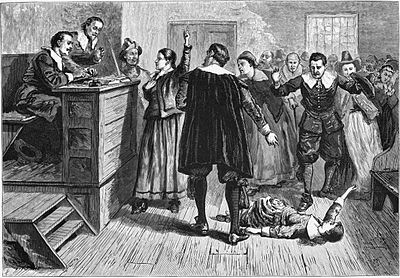
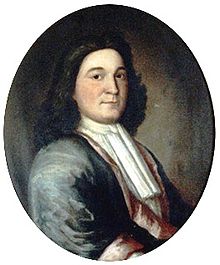

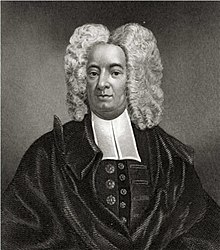





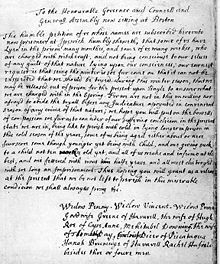

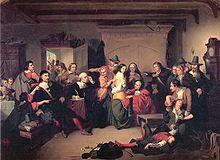


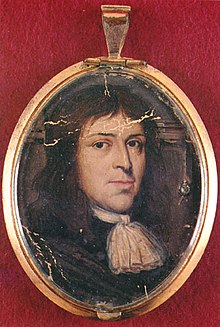
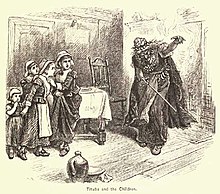
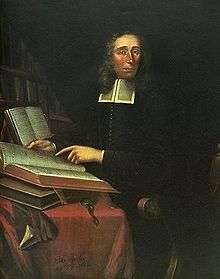

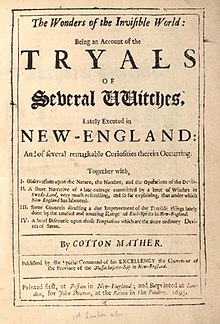
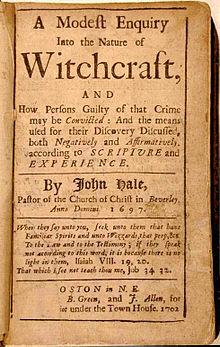
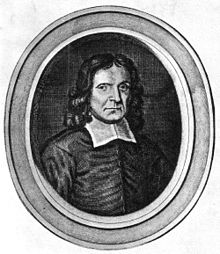


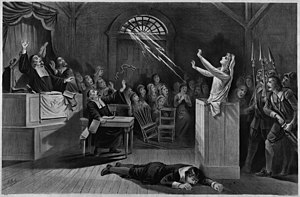










No comments:
Post a Comment